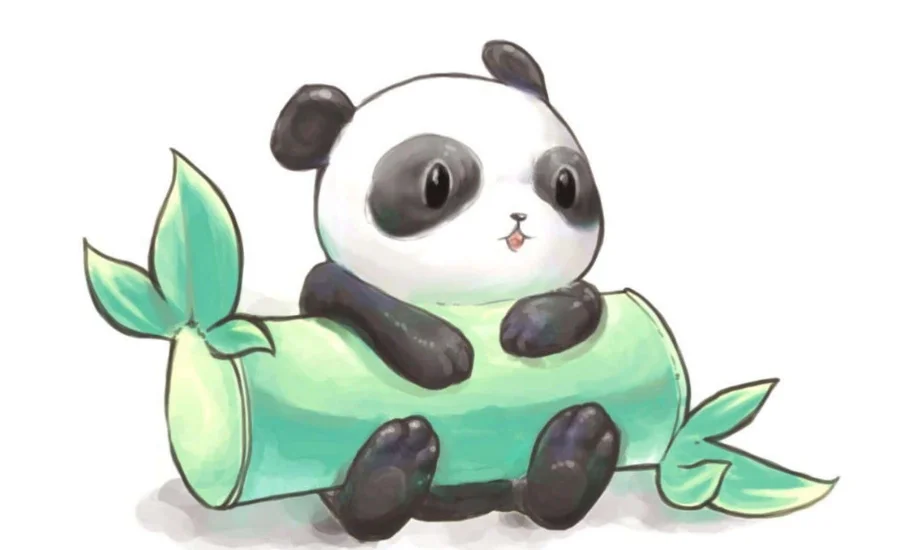Cute:lrn58vezlhw= Drawing characters and scenes has become a beloved art form in various cultures worldwide. Cute art, characterized by its charming and endearing qualities, appeals to people of all ages, evoking warmth and happiness. Whether it’s the playful designs in anime, the whimsical illustrations in children’s books, or the charming avatars used in social media profiles, cute drawings have found their way into everyday life. This article explores the world of cute drawing, from understanding its fundamentals to mastering advanced techniques, offering a comprehensive guide for artists at all levels.
Chapter 1: Understanding Cute:lrn58vezlhw= Drawing
Definition of Cute:lrn58vezlhw= Drawing
The term “cute” in art often refers to a style that emphasizes charm and appeal through simplified and exaggerated features. This includes large, expressive eyes, small noses, and oversized heads. Cute art typically evokes feelings of affection and protection, drawing viewers into a world of innocence and joy. This aesthetic can be seen in various forms, from chibi characters in anime to plush toys and cartoon animals.
The appeal of cute art lies in its ability to convey emotion and personality through minimalistic design. By focusing on key features like big eyes and round shapes, artists can create characters that resonate with audiences on a deeper emotional level. This style often incorporates bright colors and playful elements, further enhancing the overall sense of cuteness.
Historical Evolution of Cute:lrn58vezlhw= Drawing Styles
The concept of cuteness in art has evolved significantly over the years. In early art forms, such as ancient sculptures and paintings, the depiction of cuteness was less prevalent. However, with the advent of modern illustration and animation, cute art began to gain prominence. Japanese manga and anime, in particular, played a significant role in popularizing the cute aesthetic with the introduction of characters like Hello Kitty and Pikachu.
Cute:lrn58vezlhw= Drawing The rise of digital media and online platforms has further expanded the reach of cute art. Social media and art communities have provided artists with new opportunities to showcase their work, leading to a resurgence of interest in cute and whimsical designs. This ongoing evolution reflects the enduring appeal of cute art and its ability to adapt to contemporary trends and technologies.
Popular Culture and Cute Art
Cute:lrn58vezlhw= Drawing has a significant presence in popular culture, influencing everything from fashion to entertainment. The Kawaii culture in Japan, which emphasizes cuteness in various aspects of daily life, has had a global impact. Characters such as Hello Kitty and Totoro have become iconic symbols of cuteness, appearing on merchandise, in media, and as part of cultural events.
In Western culture, Cute:lrn58vezlhw= Drawing has also made its mark through animated films and TV shows. Characters from movies like “Despicable Me” and “My Neighbor Totoro” have captured the hearts of audiences with their adorable designs and endearing personalities. This cross-cultural appeal demonstrates the universal nature of cuteness and its ability to connect with people across different backgrounds and age groups.
Chapter 2: Tools and Materials for Cute:lrn58vezlhw= Drawing
Traditional Drawing Tools
Cute:lrn58vezlhw= Drawing Creating cute drawings can be achieved with a variety of traditional tools. Pencils are essential for sketching and refining initial concepts, allowing artists to explore different shapes and expressions before committing to final lines. Graphite pencils come in various hardness levels, with softer pencils (e.g., 6B) providing darker lines and harder pencils (e.g., 2H) offering lighter marks.
Inks and pens are used to finalize drawings, adding clean lines and details. Fine-tipped pens, such as Micron or Pigma pens, are popular choices for outlining, while brush pens can be used for more expressive and varied line work. Colored pencils and markers are used to bring cute characters to life with vibrant colors, enhancing their appeal and adding depth to the illustrations.
Digital Drawing Tools
Digital drawing tools have revolutionized the art world, offering artists a range of new possibilities for creating cute drawings. Drawing tablets, such as those from Wacom or Huion, provide a seamless interface for digital illustration. These tablets come with pressure-sensitive pens that allow for precise control over line thickness and shading.
Digital software and apps, such as Adobe Photoshop, Clip Studio Paint, and Procreate, offer a wide array of tools for coloring, layering, and texturing. These programs enable artists to experiment with different styles and techniques, making it easier to achieve the desired cute effect. Additionally, digital tools allow for easy editing and adjustment, providing flexibility throughout the creative process.
Choosing the Right Medium for Your Style
Selecting the right medium for your cute drawings depends on your personal style and preferences. Traditional media offer a tactile experience and a sense of authenticity, while digital tools provide convenience and versatility. Many artists choose to combine both approaches, using traditional sketches as a base and digital tools for final touches and coloring.
When choosing a medium, consider factors such as the desired level of detail, the type of effects you want to achieve, and your comfort with the tools. Experimenting with different mediums can help you discover what works best for your style and enhance your ability to create cute and engaging art.
Chapter 3: Fundamentals of Cute Drawing
Basic Shapes and Forms
The foundation of cute drawing lies in mastering basic shapes and forms. Most cute characters are built from simple geometric shapes like circles, ovals, and squares. These shapes provide a framework for creating rounded and soft designs that contribute to the overall cuteness.
Circles are commonly used for heads and eyes, while ovals can represent bodies and limbs. Squares and rectangles can be used for accessories and clothing. Understanding how to manipulate these shapes to create pleasing proportions and symmetry is crucial for developing appealing cute characters.
Proportions and Anatomy of Cute Characters
Proportions play a key role in cute drawing, as exaggerated features are often used to enhance cuteness. Cute characters typically have large heads in relation to their bodies, with big eyes and small mouths. This proportion creates a sense of innocence and appeal, drawing viewers in and evoking a nurturing response.
Simplified anatomy is another hallmark of cute art. Rather than focusing on realistic details, cute characters often have simplified and stylized features. This approach allows artists to emphasize key elements, such as expressive eyes and playful poses, without being constrained by realistic anatomical accuracy.
Chapter 4: Developing Your Style
Identifying Your Artistic Voice
Finding your own style in cute drawing involves exploring different techniques and influences to develop a unique artistic voice. Start by analyzing the styles of artists you admire and experimenting with various approaches to see what resonates with you. Pay attention to how different elements, such as line quality, color palette, and character design, contribute to the overall cuteness of the artwork.
Consider keeping a sketchbook to document your ideas and experiments. This practice allows you to track your progress, identify recurring themes, and refine your style over time. Embrace the process of discovery and experimentation, as developing a personal style is an ongoing journey that evolves with your skills and experiences.
Experimenting with Different Cute Styles
There are various cute styles to explore, each with its own distinct characteristics. The chibi style, for example, features characters with oversized heads and small bodies, often conveying a sense of humor and playfulness. The Kawaii style, originating from Japan, emphasizes cuteness through bright colors, exaggerated expressions, and adorable accessories.
Cartoonish styles offer another approach, focusing on exaggerated features and simplified designs to create humorous and endearing characters. Experimenting with these styles can help you find the one that best suits your artistic preferences and allows you to express your creativity in new and exciting ways.
Chapter 5: Drawing Techniques for Cuteness
Facial Expressions
Facial expressions are crucial for conveying emotion and personality in cute drawings. Key features to focus on include the size and shape of the eyes, the curve of the mouth, and the position of the eyebrows. Large, sparkling eyes often evoke a sense of wonder and innocence, while a small, smiling mouth adds to the overall cuteness.
Experiment with different expressions to see how they impact the character’s personality. For example, a surprised expression can add a sense of excitement, while a shy or timid look can create a feeling of vulnerability. Mastering these expressions will enhance your ability to create characters that resonate with viewers on an emotional level.
Body Language and Poses
Body language and poses play a significant role in the appeal of cute characters. Dynamic poses, such as jumping or twirling, can convey a sense of energy and playfulness. On the other hand, static poses, such as sitting or standing with a slight tilt, can create a sense of calm and cuteness.
Consider how the character’s pose reflects their personality and mood. For instance, a character with an enthusiastic pose might be depicted with arms raised and a wide smile, while a shy character could be drawn with a more reserved posture. Incorporating these details will help bring your characters to life and make them more engaging to viewers.
Chapter 6: Creating Cute Characters
Designing Cute Characters from Scratch
Designing cute characters from scratch involves creating a concept and backstory that adds depth to the character. Start by brainstorming ideas for the character’s personality, interests, and traits. This will help guide your design choices, such as their appearance, clothing, and accessories.
Begin with rough sketches to explore different designs and refine your ideas. Focus on key elements, such as facial features and body proportions, to ensure that the character’s cuteness is conveyed effectively. Once you have a solid design, create a final illustration that captures the character’s unique personality and charm.
Read more: Why You Should Never Ignore Website Revamping Lordwoods.com










